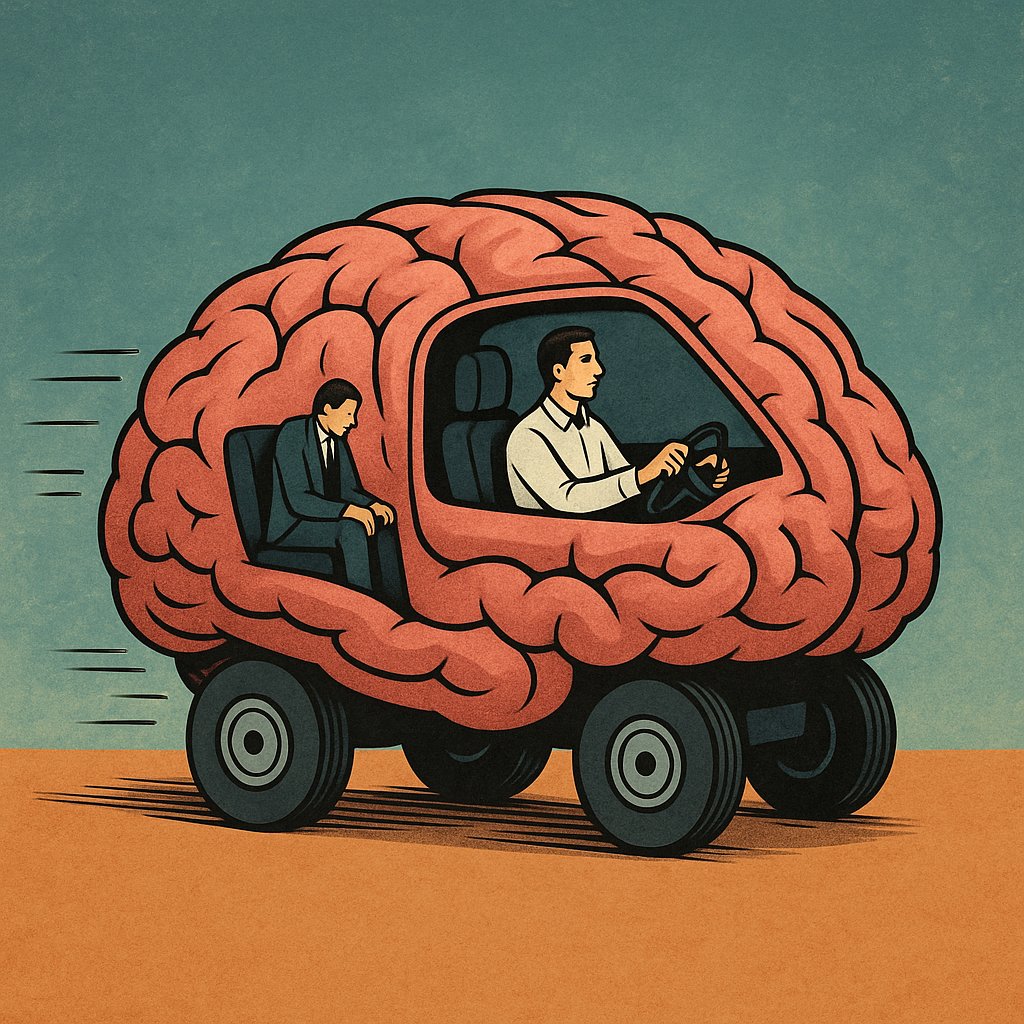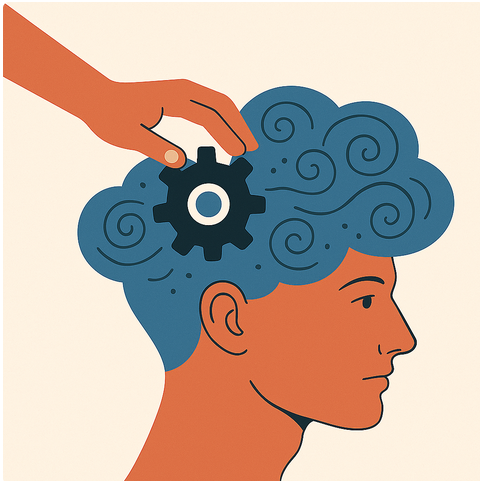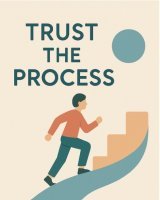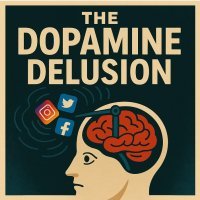Rewiring Your Autopilot
How To Harness Your Subconscious Mind & Move From Passenger To Pilot

Introducing The Case For Rewiring Your Autopilot
The case for rewiring your autopilot is that most of what drives your thoughts, reactions, and decisions happens below your conscious awareness in your subconscious mind.
You can think of this as the silent autopilot of your behaviour, that shapes what you feel, believe and do, long before you consciously choose.
The issue is that whilst it can work for you it also works against you.
This article explores how to make your subconscious autopilot work for you through the practical disciplines of awareness, understanding, acceptance, and deliberate reprogramming.
It references a number of recent articles on Zen Tools that address this and closely related subjects and also provides a wide range of additional, relevant resources.
It offers a clear path from mental autopilot to conscious self-mastery - showing how to move from being a passenger of your own mind to becoming its pilot.
The Hidden Operator
You decide to stay calm in traffic - yet five minutes later, you’re tense, irritated, and muttering at the car in front.
You promise yourself not to check your phone - and find it in your hand again, and without remembering you pick it up.
You set a clear intention to focus - and end up scrolling headlines instead.
You’re not broken. You’re human.
Beneath conscious awareness, a powerful and efficient system - your subconscious mind - quietly runs most of your behaviour.
- It’s designed to help you function by automating familiar actions and responses.
- But it also runs on old programming - patterns formed long ago and never questioned.
- This is the starting point for rewiring your autopilot: understanding that much of your everyday behaviour is governed by outdated scripts running silently in the background.
In The Battle for Your Mind, we explored how these automatic processes sit on the “Low Road” - reactive, fast, emotional.
The “High Road” - conscious, reflective, deliberate thought processes - can override them, but only when you are aware that they’re operating.
The subconscious shapes thoughts, reactions, and even identity. It can work for you — helping you form supportive habits and calm responses — or against you, holding you in loops you thought you’d outgrown.
The goal isn’t to fight this system, but to understand, retrain, and ultimately rewire it so it supports your best intentions.
In my own experience of a very difficult time, I found this invisible operator at work in the darkest moments - waking in the early hours to destructive loops of thought, feeling entirely controlled.
I selected a simple mantra: ‘I choose the light - I walk in the light.’ I found that repeating it at that vulnerable moment didn’t suppress the mind; it gave the autopilot system a different script.
Over weeks it became automatic. That’s the essence of rewiring your autopilot.
The Observer and the Operator
When you realise that you are not your thoughts, it is very liberating to discover that you are the observer of your thoughts, not the thoughts themselves.
Thoughts appear and disappear - sometimes helpful, sometimes repetitive, sometimes harmful - but you remain: the one who sees them arise.
This is the foundation for rewiring your autopilot, because most thoughts emerge from subconscious processes far beneath awareness.
When you identify with them, you become a passenger of those hidden forces. When you observe them, you move into awareness — the seat of choice.
Think of your subconscious as an aircraft autopilot. It flies routine routes efficiently but struggles when the terrain changes. That same autopilot, if not updated, may steer you into old patterns even when you consciously want new outcomes.
What the Subconscious Mind Really Is

Let’s remove the mystique. The subconscious mind is not magical or mysterious. It is simply the set of mental processes that operate without conscious control.
It stores and executes routines learned through repetition. Everything from walking to typing to social responses to emotional reflexes lives here.
Habit loops, conditioned associations, implicit memories - this is the architecture of the subconscious.
In The Wise Advocate model - based on the work of Dr Jeffery Schwartz [and others] - we saw the brain as two complementary systems:
- The automatic mind (fast, intuitive, emotional)
- The reflective mind (slow, deliberate, wise)
The subconscious is rooted in the automatic system. Efficient, but indiscriminate. It prefers familiarity over growth.
In the Conscious Competence Model we see how repeated behaviours transition from effortful to automatic. This includes emotional patterns and internal narratives, not just practical skills.
This is where rewiring your autopilot becomes feasible: because the subconscious is programmable.
It already is programmed - by repetition, fear, comfort, stress - but it can be updated through deliberate practice and awareness.
How the Subconscious Works Against You
Your subconscious is like a loyal assistant who never updates their training manual. It keeps acting on instructions written years ago - sometimes decades.
Here’s how that outdated autopilot can quietly undermine you:
- Emotional reactions
- Old emotional memories trigger automatic feelings - anger, anxiety, defensiveness - before you interpret the situation.
- Habitual distraction
- Default behaviours arise the moment discomfort appears -checking your phone, drifting to entertainment, procrastinating.
- Self-limiting beliefs
- Repeated subconscious narratives shape your choices: “I’ll fail,” “I’m not good enough,” “It won’t work.”
- Resistance to change
- We all carry unconscious “immunity systems” - deep subconscious commitments that keep you safe by keeping you stuck.
- Unexamined thoughts
- You need to become intimate with your thoughts - to see your thoughts as they arise.
- When thought becomes invisible it becomes tyrannical as these hidden patterns can create considerable mental suffering.
- For example, in one challenging period I found myself waking with a chorus of voices accusing me of failure, hopelessness, unemployability.
- The scripts ran beneath awareness until I intervened by providing a different script.
You may experience this when you plan to write or exercise or start a project.
But when the time comes, fatigue, anxiety, or distraction appears from nowhere. That’s not laziness. It’s survival logic: your subconscious associates change with risk.
How to Make the Subconscious Work for You

The subconscious learns through repetition and association. Not through insight alone. You must train it.
Here is a five-step Zen Tools framework for rewiring your autopilot in a practical, grounded way:
Step 1: Awareness - Observe the Autopilot
- You cannot upgrade a system you cannot see. Begin noticing your automatic reactions.
- Practise the micro-technique: Pause. Breathe. Notice.
- Ask yourself: “Is this me - or my autopilot?”
This begins the process of rewiring your autopilot by interrupting unconscious patterns.
*****************
Step 2: Understanding - Trace the Pattern
Once you observe a reaction, trace its origin.
- What belief drives it?
- What emotion sustains it?
- What hidden benefit does it serve?
Understanding dissolves confusion.
You see structure where you once felt stuck.
*****************
Step 3: Acceptance — Stop Fighting the Subconscious
Resistance strengthens old patterns.
Acceptance weakens them.
In practice, I used what I call a ‘deep-acceptance’ process:
- Check in - ‘What am I feeling now?’
- Pick the first emotion that arises, and say to myself repeatedly: ‘I accept that I am feeling … anger / fear / anxiety / resentment’.
- After several iterations the emotion will shift to peace, the autopilot will quiet, and the reflective mind will return.
This is a very personal example of how acceptance interrupts the default system.
Allow thoughts and impulses to arise without identifying with them - because you understand that you are not your thoughts.
Acceptance says: “This is conditioning, not identity.”
It’s a turning point in rewiring.
The subconscious loses authority the moment it is observed without resistance.
*****************
Step 4: Reprogramming - Create New Defaults
This is the active phase of rewiring your autopilot.
Apply the principle from The Wise Advocate of choosing the reflective “High Road.” Each small, new action updates subconscious programming.
In that same experience I shared above about the mantra ‘I choose the light – I walk in the light’, eventually it didn’t require effort. The subconscious had accepted and adopted it.
This matches the transition from conscious competence to unconscious competence: the new script became the new default. That is exactly what rewiring your autopilot looks like in practice.
Repetition is the key. Whatever you practise becomes the new default. Small rewires:
- Replace reactivity with one conscious breath.
- Replace avoidance with one small action.
- Replace self-attack with one factual statement.
Neuroscience calls this neuroplasticity. Zen Tools calls it practical wisdom.
*****************
Step 5: Integration - Living the Practice
Integration is where new wiring becomes stable.
- Review your patterns weekly.
- Notice small shifts.
- Reinforce new defaults.
The moment your subconscious begins supporting your chosen values, the training has taken root. This is where clarity becomes effortless.
The System’s Perspective - The Subconscious as a Subsystem From a systems thinking perspective, the subconscious is a subsystem within the mind. When
unexamined, it dominates the whole system, prioritising comfort over
clarity. When integrated, it becomes a reliable mechanism that frees
conscious attention for what matters. This systemic viewpoint reinforces the logic of rewiring your autopilot: you are not deleting the subsystem; you are updating its processes. Zen Tools defines this as practical Zen - not detachment but intelligent interaction with your mind’s architecture.
From Passenger to Pilot

Your subconscious is not your enemy. It is a powerful servant operating on outdated instructions.
Without awareness, you are a passenger of automatic reactions.
With awareness, you step into the pilot’s seat.
Rewiring takes time, but not struggle. Small, repeated, conscious acts create new pathways. Over time, old impulses lose power. New patterns arise naturally.
You still experience old thoughts, but they arrive like faint echoes rather than commands.
This is freedom. The subconscious becomes your ally — not your master.
The subconscious mind is a powerful servant, but it needs a conscious master.
Points for Reflection
- What reactions in your life feel “automatic”?
- Which thoughts repeat without your consent?
- What discomforts trigger your autopilot responses?
- What beliefs or emotional memories might underpin those reactions?
- How would your life change if your subconscious supported your goals?
Points for Action
- Pause three times today and simply notice what your mind is doing.
- Record one automatic reaction and identify its likely trigger.
- Name the pattern: “This is conditioning, not identity.”
- Choose one counter-action and repeat it daily.
- Review each evening: What changed? What softened?
Small, consistent steps are the engine of subconscious transformation.
Recommended Further Reading
- You Are Not Your Thoughts
- The Wise Advocate
- The Battle for Your Mind
- Why You Need to Be Intimate with Your Own Thinking
- Immunity To Change
- I Do Not Feel Like It
- Stages of Learning
Return from: "Renewing Your Autopilot " to: Inner Mastery For Outer Impact or Walking The Talk
Next Article: I Do Not Feel Like It - Feelings, Resistance And How To Take Action
LATEST ARTICLES
The Power Of Asking The Right Question
 The Power Of Asking The Right Question Lies In The Quest For Insight. To experience the power of asking the right question you must develop the practice of asking questions. The best way to improve th…
The Power Of Asking The Right Question Lies In The Quest For Insight. To experience the power of asking the right question you must develop the practice of asking questions. The best way to improve th…Site Pathways
 Here is a site pathway to help new readers of Zen-Tools navigate the material on this site. Each pathway is based around one of the many key themes covered on this site and contain a 150 word introduc…
Here is a site pathway to help new readers of Zen-Tools navigate the material on this site. Each pathway is based around one of the many key themes covered on this site and contain a 150 word introduc…How To Live With Contradiction - Beyond Thought Let Stillness Speak
 A major impact on so many peoples' lives is the situational contradiction of unfilled realistic expectations. So where does all this leave us? Well here we are, with mental equipment that is more lim…
A major impact on so many peoples' lives is the situational contradiction of unfilled realistic expectations. So where does all this leave us? Well here we are, with mental equipment that is more lim…How To Trust The Process Of Mindfulness - Right Now
 In mindfulness, the process isn’t some distant goal — it's what is happening right now. When we talk about how to trust the process of mindfulness the credibility of the process is heavily dependent…
In mindfulness, the process isn’t some distant goal — it's what is happening right now. When we talk about how to trust the process of mindfulness the credibility of the process is heavily dependent…Inner Mastery For Outer Impact - Mental Clarity For Effective Action
 Insights only matter if they translate into consistent action. In a world crowded with quick fixes and motivational soundbites, the theme “Inner Mastery for Outer Impact” calls us to something more e…
Insights only matter if they translate into consistent action. In a world crowded with quick fixes and motivational soundbites, the theme “Inner Mastery for Outer Impact” calls us to something more e…The Wise Advocate - Helping You Achieve The Very Best Outcome
 The focus of your attention in critical moments of choice either builds or restricts your capacity for achieving the best outcome. When we talk of 'The Wise Advocate' its easy to think of the consigl…
The focus of your attention in critical moments of choice either builds or restricts your capacity for achieving the best outcome. When we talk of 'The Wise Advocate' its easy to think of the consigl…Trust The Process - Beyond The Cliche
 The phrase "trust the process" has become a cliche, the woo-woo mantra of the "self help" industry. Those three little words feel like they ought to mean something useful but hidden behind them are a…
The phrase "trust the process" has become a cliche, the woo-woo mantra of the "self help" industry. Those three little words feel like they ought to mean something useful but hidden behind them are a…The Dopamine Delusion - Why Anticipation Beats Achievement
 The thrill we feel is not in the having, but in the wanting. The more we have, the more we want. The more things we acquire and the easier things get for us, the more discontent we feel. The more spo…
The thrill we feel is not in the having, but in the wanting. The more we have, the more we want. The more things we acquire and the easier things get for us, the more discontent we feel. The more spo…The Power Of Silence Is Experienced In Your Use Of Language
 Practise the "Beneficial Neurological Delay" for optimal comprehension. The power of silence is experienced in your use of language, specifically: - How you formulate the words you use to think and in…
Practise the "Beneficial Neurological Delay" for optimal comprehension. The power of silence is experienced in your use of language, specifically: - How you formulate the words you use to think and in…Dealing With Setbacks - 5 Questions To Help You Face Discomfort
 How To Counter The Cognitive Shock Of A Setback. Setbacks challenge your instinctual desire for control and comfort, making it unnatural to respond with calm or acceptance. The reason for these instin…
How To Counter The Cognitive Shock Of A Setback. Setbacks challenge your instinctual desire for control and comfort, making it unnatural to respond with calm or acceptance. The reason for these instin…Why Praxis Is The Key To Living A Successful And Stress Free Life
 Praxis Is The Process Of Taking Informed Action To take informed action you need to be prepared with information, knowledge, education and insight. Informed action is objective action that: - Seeks to…
Praxis Is The Process Of Taking Informed Action To take informed action you need to be prepared with information, knowledge, education and insight. Informed action is objective action that: - Seeks to…The Power Of Working With The Front Line
 How To Exercise Influence Without Authority In Complex Systems I first discovered the power of working with the frontline when I was working as a business troubleshooter on large projects, programmes…
How To Exercise Influence Without Authority In Complex Systems I first discovered the power of working with the frontline when I was working as a business troubleshooter on large projects, programmes…